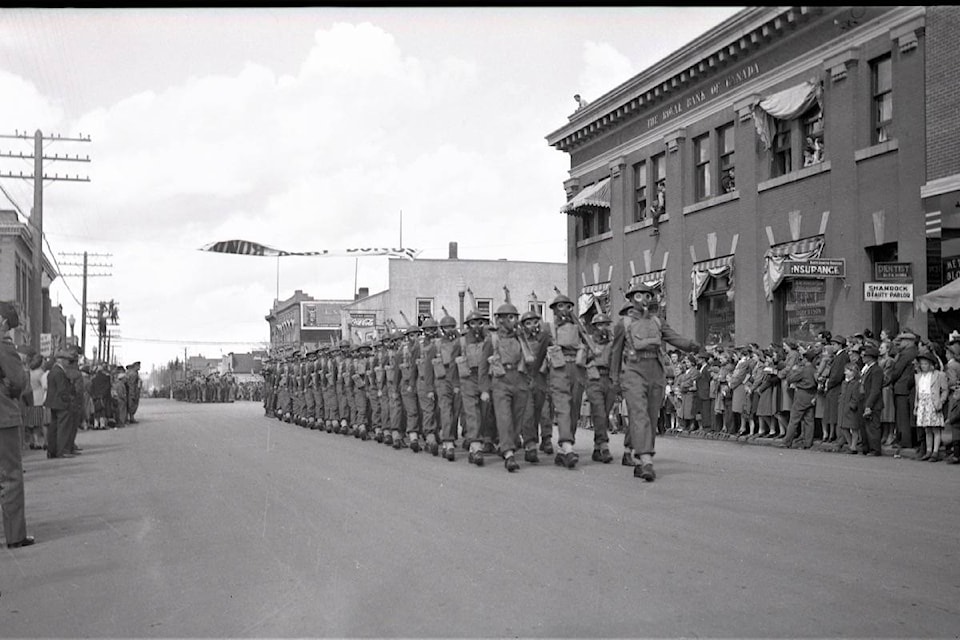The annual Remembrance Week commemorations commence on Nov. 5 this year, culminating in Remembrance Day on Nov. 11.
In the words of Veterans Affairs, it is a time to “honour those who have served Canada, past and present, in times of war, military conflict and peace.”
The theme for this year’s commemorations is the 75th anniversary of the end of the Second World War, which came to an end in 1945.
Despite the importance of the special anniversary of the end of one of the most brutal wars in the history of mankind, there has been little public notice this year.
That is probably because a lot of media attention these days is focused on the COVID 19 pandemic and the American presidential election.
Also, many Remembrance Day ceremonies are being cancelled, or severely cutback, due to public health concerns.
The Second World War had a huge impact on the community. More than 1,100 men and women from Red Deer and district enlisted for service.
Fifty-three young men lost their lives during the six-year-long conflict. Nearly two dozen were taken prisoners of war. A great many more suffered wounds to their bodies and/or their minds.
Almost everyone in the community was affected, with members of their family and/or friends being killed, wounded or interned.
As soon as war was officially declared in early September 1939, after Germany invaded Poland, people began to flock to the local recruiting stations.
However, as initial quotas were almost immediately filled, the pace of recruitment began to slacken.
This was not because of a lack of willing volunteers. The military authorities wanted to avoid a lot of the chaos that had been experienced at the start of the First World War.
Hence, there was a decision to proceed with training in “batches,” rather than taking everyone at once.
This is not to say that nothing happened. Quite the opposite. One significant decision was to turn the small Penhold airport into a major air force training base under the British Commonwealth Air Training Plan.
In the fall of 1940, Penhold became No. 2A Manning Depot for the Royal Canadian Air Force.
In the summer of 1941, with the Battle of Britain raging overseas, it became the No. 36 Service Flying Training School for the Royal Air Force.
Meanwhile, the Canadian government decided to make Red Deer a major army training centre. Hence, in the summer of 1940, a militia training facility, the Non-Permanent Active Militia Training Centre #130, was built on a large site north of 55th Street.
This was later expanded and converted into the A-20 Army Training Camp.
At various times, more than 1,200 men and women were stationed at the facility.
With all the military training facilities in and around Red Deer, at one point, there were as many military personnel in the community as civilians.
As the war continued to heighten, more and more men and women enlisted. Many locals were part of the 78 Battery, Royal Canadian Artillery, Red Deer’s oldest continuous militia unit.
A great many others joined the 14 Calgary Tanks. By 1942, large numbers of people from Red Deer and area could be found in several units in virtually every branch of service, including the army, air force and navy.
The war took a huge turn towards conclusion after the successful invasion of Normandy, with D-Day on June 6, 1944.
Some of the most intense fighting took place afterwards. Several local young men lost their lives or were wounded.
Many others were lost or wounded during the heavy fighting in Italy and the Netherlands. The greatest loss of life of local men took place in the air war over Europe.
Not surprisingly, there was a huge outpouring of public celebration with V-E (Victory in Europe) Day on May 8, 1945, and smaller celebrations on V-J (Victory Over Japan) Day on Aug. 15, 1945.
A remembrance of many sacrifices of the war was added to the Red Deer Cenotaph in 1949. There is also a large commemorative plaque in the foyer of the Memorial Centre, which is actually one of the old drill halls of the A-20 Army Camp.
Red Deer historian Michael Dawe’s column appears Wednesdays.
